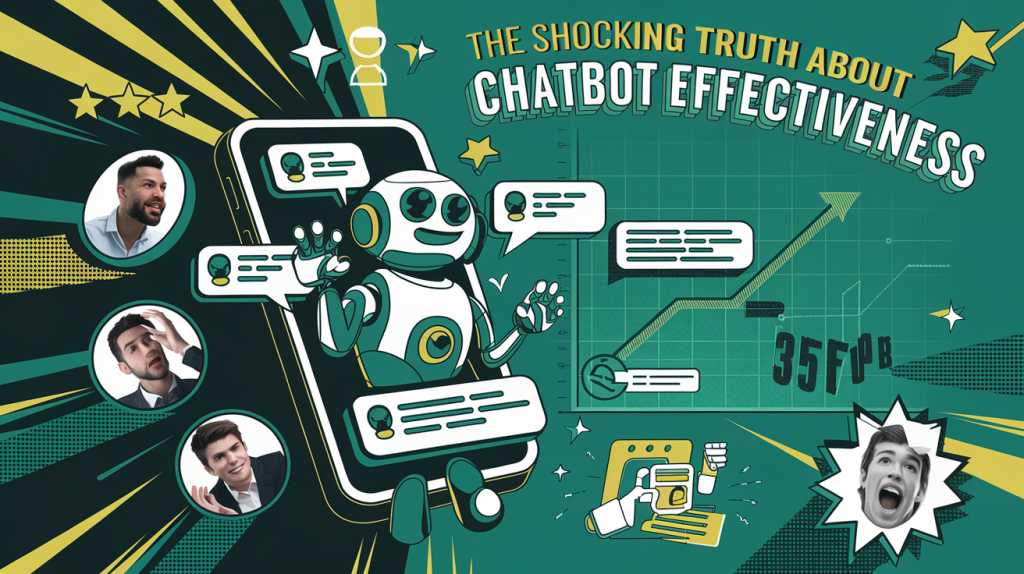The Shocking Truth About Chatbot Effectiveness

Chatbots have become a key player in customer service. In fact, 67% of customers have interacted with a chatbot for support, yet 70% still say chatbots often fail to meet their expectations. If you’re one of those customers who have been frustrated by a chatbot, you’re not alone. The reality is that while chatbots are marketed as the future of customer service, their effectiveness often falls short of the hype.
So, what’s really going on with chatbots? Are they the game-changer businesses promised, or just an overhyped tool that leaves customers frustrated? Let’s dive into the shocking truth about chatbot effectiveness.
Why Businesses Love Chatbots?
Before we get into the drawbacks, let’s first look at why businesses are rushing to implement chatbots:
- Cost Reduction: Chatbots can handle thousands of inquiries simultaneously, meaning businesses don’t need to hire a massive customer support team.
- Instant Support: They provide quick answers, helping customers without making them wait on hold.
- 24/7 Availability: Chatbots never sleep, which means customers can get help any time of the day, regardless of time zones.
With all these benefits, it’s easy to see why businesses are so eager to adopt chatbots. But despite the promise, there are some glaring problems.
The Shocking Truth: Chatbots Aren’t Always Effective
Despite their rise in popularity, chatbots have several shortcomings that businesses and customers alike are starting to notice. Here’s what you need to know:
1. Limited Understanding
Chatbots are programmed to recognize certain keywords and follow specific scripts, which means they struggle to handle anything out of the ordinary.
- For example, if a customer asks something off-script, the chatbot may provide irrelevant answers or even fail to respond altogether. This results in frustrated users who end up wasting time and potentially abandoning the service.
- Keyword Dependency: Chatbots often rely on exact phrases, meaning they can’t interpret questions that are phrased differently. If you ask a chatbot a question in a slightly unusual way, it might not understand or give a helpful response.
2. Frustrating Customer Experience
Chatbots are designed to provide quick responses, but when they fail to answer correctly or at all, customers end up feeling more frustrated than helped.
- A survey found that 63% of consumers would abandon a brand if the chatbot didn’t meet their expectations.
- Poor Experience: Many chatbots are great at answering basic queries but struggle with anything more complex. When customers realize they can’t get further help, it leads to negative experiences that harm the brand.
3. Lack of Personalization
While a human agent can provide personalized, empathetic service by remembering past interactions, chatbots can’t do the same.
- Chatbots typically don’t have the ability to recall past conversations or personalize responses. They can’t tailor their answers based on previous customer behavior.
- For example, if a customer asks a chatbot for assistance with an item they previously bought, the chatbot will likely fail to recognize the customer’s history, making the interaction feel impersonal.
4. Inability to Handle Complex Issues
Chatbots are great for simple tasks like answering FAQs or tracking orders, but they fail to address more complex issues.
- When a customer encounters a problem that requires human intervention—like a refund or a technical issue—the chatbot can’t provide the necessary support.
- Customers often end up waiting for a live agent, but by then, the frustration has already built up.
When Do Chatbots Actually Work?
Despite these limitations, chatbots can still be highly effective in certain situations. Here’s when they shine:
- Basic Queries: Chatbots are perfect for answering common questions that don’t require complex reasoning, such as store hours, product details, or return policies.
- Appointment Scheduling: For businesses offering appointments, chatbots can manage bookings, reminders, and cancellations, saving time for both the business and the customer.
- 24/7 Availability: When you need basic support during off-hours, chatbots can provide answers without the need for a human agent. This ensures your customers aren’t left in the dark at night.
How to Make Chatbots Work for You?
If you’re a business owner considering using chatbots, here are a few tips for ensuring they’re effective:
- Use Chatbots for Simple Tasks: Keep expectations realistic. Use chatbots for basic queries and let humans handle more complex interactions.
- Ensure Smooth Handover to Human Agents: When a chatbot can’t resolve an issue, it’s essential that it can seamlessly transfer the conversation to a human agent who can handle the problem.
- Keep Updating Your Chatbot: Make sure your chatbot is regularly updated with new information and trained to handle a variety of customer inquiries.
The truth about chatbot effectiveness is that they aren’t perfect. They can be incredibly useful for handling basic tasks, automating customer support, and saving businesses time and money. However, chatbots aren’t a one-size-fits-all solution. They struggle with more complex issues, lack personalization, and can leave customers frustrated.
So, before you jump on the chatbot bandwagon, keep in mind that they work best when paired with human support and used in the right context. With the right strategy, chatbots can enhance your customer service, but they shouldn’t be the only tool in your customer experience toolkit.
By setting realistic expectations and knowing where chatbots excel, you can make the most of this technology without over-relying on it.